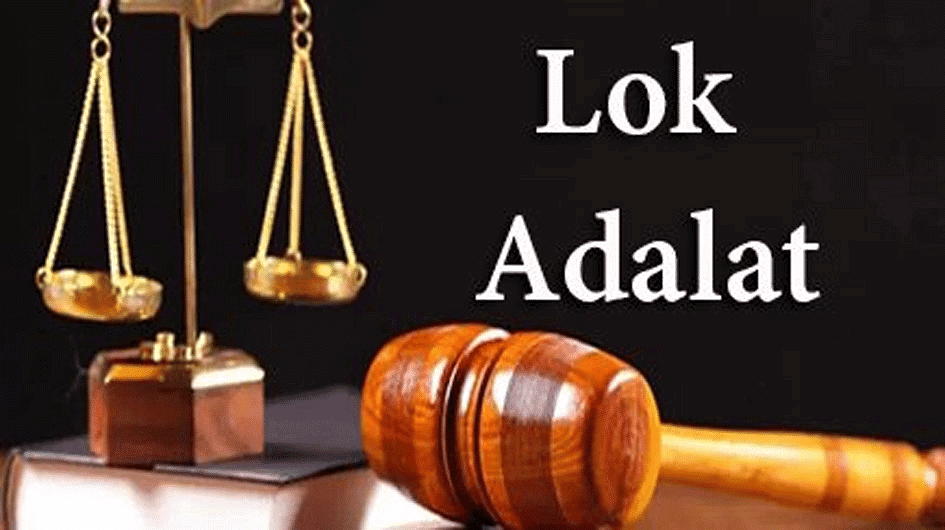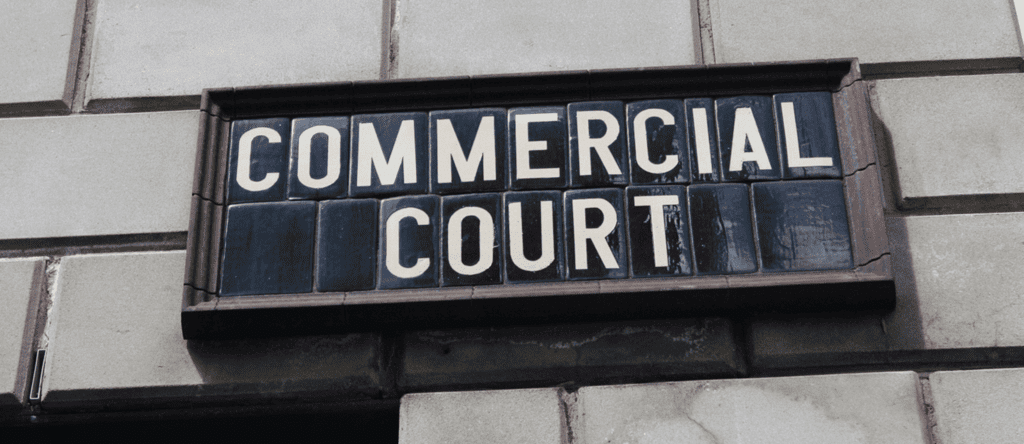Laxmikant Summary: Lok Adalats and Other Courts | Indian Polity for UPSC CSE PDF Download
| Table of contents |

|
| National Legal Services Authority |

|
| Lok Adalats |

|
| Permanent Lok Adalats |

|
| Family Courts |

|
| Gram Nyayalayas |

|
| Commercial Courts |

|
National Legal Services Authority
Article 39A of the Indian Constitution ensures that poor and vulnerable people get free legal help for justice. It's all about making sure everyone is treated fairly before the law. Similarly, Articles 14 and 22(1) also say the government must make sure everyone is equal under the law and that the legal system promotes justice for all.
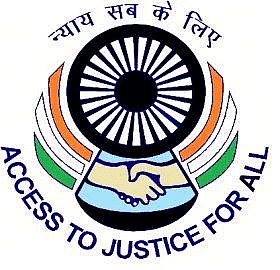 National Legal Services Authority
National Legal Services Authority
In 1987, the government passed the Legal Services Authorities Act to set up a network providing free legal help to the weaker sections of society. This law became active on November 9, 1995. The National Legal Services Authority (NALSA) was created under this Act to oversee and evaluate the implementation of legal aid programs and set policies for making legal services available.
In each state, there's a State Legal Services Authority, and in every High Court, there's a High Court Legal Services Committee. District Legal Services Authorities and Taluk Legal Services Committees are set up in districts and Taluks to follow NALSA's policies and provide free legal services to the people. The Supreme Court Legal Services Committee is responsible for administering and implementing legal services for the Supreme Court of India.
NALSA makes rules and guidelines and creates effective and economical plans for State Legal Services Authorities to carry out legal service programs all over the country.
 Supreme Court of India
Supreme Court of India
The State Legal Services Authorities, District Legal Services Authorities, Taluk Legal Services Committees, etc., are primarily responsible for regularly performing the following main functions:
- Providing free and competent legal services to eligible individuals.
- Organizing Lok Adalats for amicable settlement of disputes.
- Conducting legal awareness camps in rural areas.
These free legal services encompass:
- Covering the expenses for court fees, process fees, and all other charges related to any legal proceedings.
- Offering the services of lawyers in legal proceedings.
- Facilitating the acquisition and supply of certified copies of orders and other documents in legal proceedings.
- Assisting in the preparation of appeals, creating a paper book, including tasks such as printing and translation of documents in legal proceedings.
People who can receive free legal services include:
- Women and children: Any woman or child in need of legal assistance.
- Members of SC/ST: Individuals belonging to Scheduled Castes or Scheduled Tribes.
- Industrial workmen: Employees working in industries.
- Victims of mass disasters, violence, floods, droughts, earthquakes, or industrial disasters: Those affected by large-scale unfortunate events.
- Disabled persons: Individuals with disabilities seeking legal support.
- Persons in custody: People who are detained or under arrest.
- Persons with an annual income not exceeding ₹1 lakh (₹5,00,000 for the Supreme Court Legal Services Committee): Individuals with limited financial means.
- Victims of human trafficking or beggary: Those who have been exploited or coerced into trafficking or begging.
Lok Adalats
Meaning
The Lok Adalat is an ancient method of dispute resolution in India, and its validity has endured to the present day. The term 'Lok Adalat,' translating to 'People's Court,' is rooted in Gandhian principles and constitutes a component of the Alternative Dispute Resolution (ADR) system.
The need for Lok Adalat arises from the overwhelming backlog of cases in Indian courts and the cumbersome, time-consuming, and expensive nature of regular court procedures. Even minor cases can take years to be resolved through the traditional court system.
Lok Adalat plays a crucial role by offering an alternative avenue for expedited and cost-effective justice.
The acceptance and viability of Lok Adalat are evident as it is viewed as a practical, economic, efficient, and informal means of dispute resolution. It serves as a recent strategy for delivering informal, affordable, and prompt justice to address disputes, whether pending in courts or not yet brought before them. This involves negotiation, conciliation, and a practical, humane approach, guided by specially trained and experienced conciliators.
Features
In 1982, the first Lok Adalat camp in the post-independence era took place in Gujarat, proving highly successful in settling disputes. As a result, the concept of Lok Adalat began spreading to various parts of the country. During this period, Lok Adalat operated as a voluntary and conciliatory agency, lacking any statutory backing for its decisions.
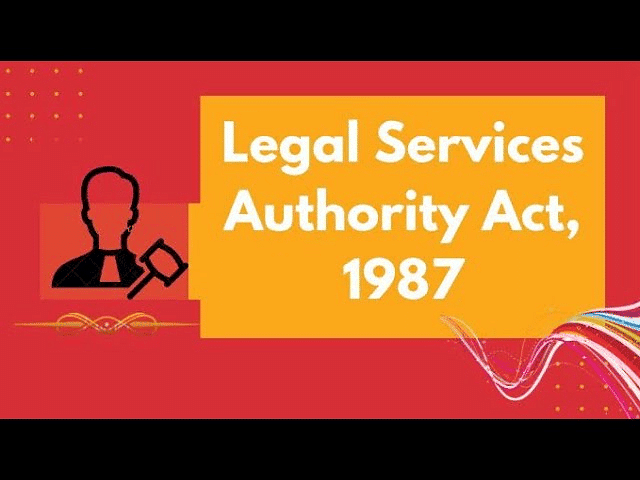
Due to its increasing popularity, there was a demand to provide legal support to Lok Adalat and its awards. Consequently, the institution of Lok Adalat was granted statutory status under the Legal Services Authorities Act, 1987. This legal backing ensured that Lok Adalat could function with official recognition and authority in resolving disputes.
The law outlines how Lok Adalats, special dispute resolution forums, operate. Here are the key points explained:
- Organization of Lok Adalats:
- State Legal Services Authority, District Legal Services Authority, Supreme Court Legal Services Committee, High Court Legal Services Committee, or Taluk Legal Services Committee can organize Lok Adalats.
- They can decide the intervals, places, and jurisdictions for these Adalats.
- Composition of Lok Adalats:
- Lok Adalats consist of judicial officers, both serving and retired, and individuals specified by the organizing agency.
- Typically, a Lok Adalat has a judicial officer as the chairman, along with a lawyer (advocate) and a social worker as members.
- Jurisdiction of Lok Adalats:
- Lok Adalats can settle disputes and arrive at compromises for cases pending before any court or matters within a court's jurisdiction not yet brought before it.
- They can handle disputes at both pre-litigation and court-pending stages.However, Lok Adalats cannot deal with cases related to non-compoundable offenses under any law.
- Referral of Cases to Lok Adalat:
- Cases pending in regular courts can be referred to Lok Adalats for settlement if parties agree, if one party applies, or if the court deems it appropriate.
- For pre-litigation disputes, the organizing agency can refer the matter upon receiving an application from any party involved.
- Powers of Lok Adalats:
- Lok Adalats have powers equivalent to a Civil Court under the Code of Civil Procedure, 1908.
- They can summon witnesses, obtain documents, receive evidence on affidavits, requisition public records, and more.
- Lok Adalats can specify their own procedures and are considered judicial proceedings under the Indian Penal Code (1860).
- Status of Lok Adalat Awards:
- An award from a Lok Adalat is treated as a decree of a Civil Court or an order of any other court.
- The award is final and binding on all parties involved.
- No appeals can be made against Lok Adalat awards in any other court.
Types
There are three types of Lok Adalats: National Lok Adalats, State Lok Adalats, and Permanent Lok Adalats (Public Utility Services). They deal with various cases, including pre-litigation and pending matters related to different legal areas like the Negotiable Instruments Act, bank recovery cases, labor disputes, service matters, criminal compoundable matters, and more.
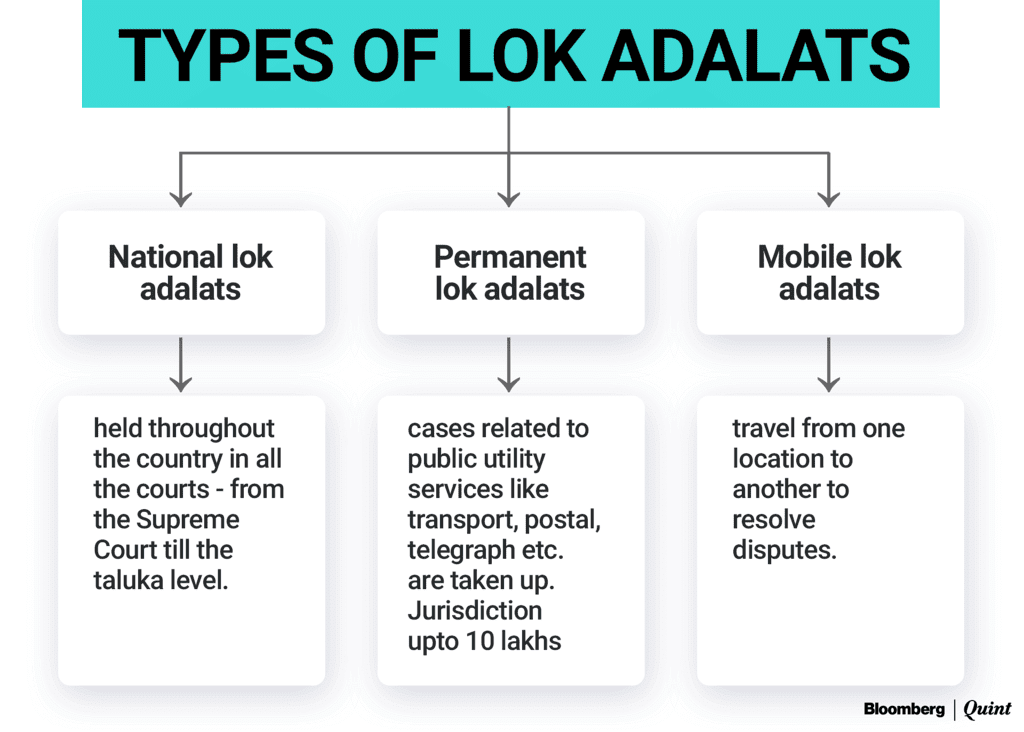 Types of Lok Adalats
Types of Lok Adalats
- National Lok Adalats -
- They are special events that happen regularly across the country on a specific day. On this day, Lok Adalats are conducted in all courts, starting from the Supreme Court down to the Thaluk Levels. These events are organized to efficiently resolve a large number of cases in a single day.
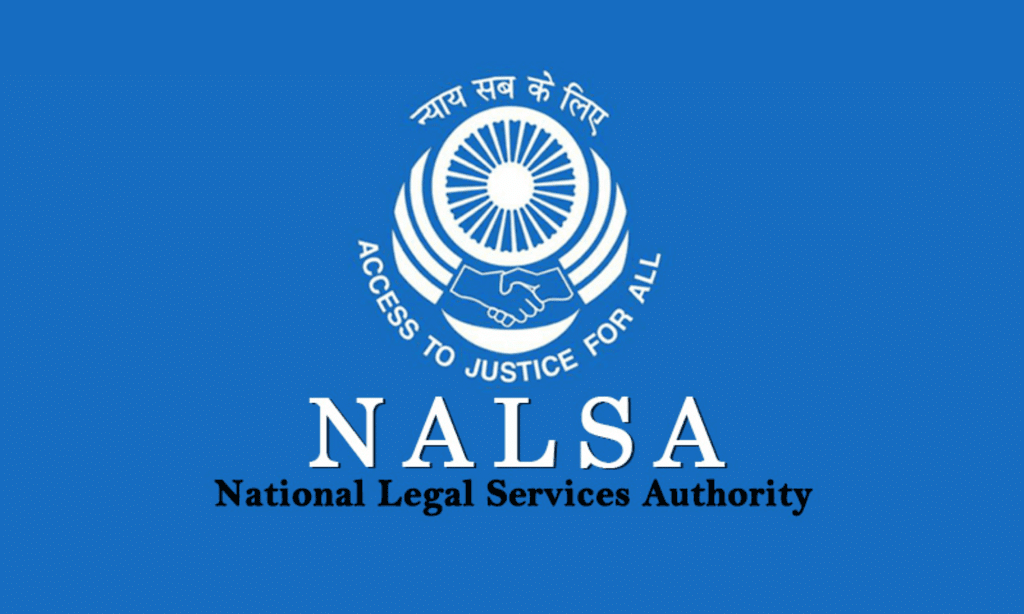
- Since 2015, National Lok Adalats follow a specific theme every month. This means that each month's event focuses on handling cases related to a particular subject matter. This thematic approach helps in the organized and speedy resolution of cases, providing a more effective way to clear the backlog of legal matters.
- They are special events that happen regularly across the country on a specific day. On this day, Lok Adalats are conducted in all courts, starting from the Supreme Court down to the Thaluk Levels. These events are organized to efficiently resolve a large number of cases in a single day.
- State Lok Adalats - State Lok Adalats, also known as Regular Lok Adalats, come in various types, each serving a specific purpose:
- Continuous Lok Adalat: A Continuous Lok Adalat bench operates continuously for a set number of days. This format facilitates settlements by deferring unresolved matters to the next date. Parties are encouraged to reflect on the mutually accepted settlement terms before the final resolution.
- Daily Lok Adalat: Daily Lok Adalats are organized on a day-to-day basis. These events are held regularly to handle cases and encourage timely resolutions.
- Mobile Lok Adalat: Mobile Lok Adalats take the Lok Adalat setup to different areas using a Multi-utility van. This format aims to resolve petty cases and also spread legal awareness in various regions.
 Mobile Lok Adalat
Mobile Lok Adalat - Mega Lok Adalat: Mega Lok Adalats are organized on a single day and conducted simultaneously in all courts of the State. This large-scale event aims to efficiently address a significant number of cases within a short timeframe.
- Permanent Lok Adalats -
- Permanent Lok Adalats are continuous legal forums specifically designed for resolving disputes related to public utility services like electricity, water supply, sanitation, and transportation.
- They operate consistently and comprise a chairman, typically a judicial officer, and two members, often including a social worker.
- The main objective is to provide swift and efficient resolution in these essential service areas. Awards from Permanent Lok Adalats hold legal weight, serving as final decisions in the disputes.
Benefits
According to the Supreme Court, Lok Adalats have several benefits:
No Court Fee: You don't have to pay any fees to the court, and if you already paid, they give it back if the issue gets solved in Lok Adalat.
Flexible and Fast:
- Lok Adalats are flexible and resolve disputes quickly.
- They don't strictly follow complicated laws like the Civil Procedure Code and the Evidence Act.
Direct Interaction: You can talk directly to the judge through your lawyer, which is not usual in regular courts.
Binding Award: The decision made by Lok Adalat is final and acts like a court decree. You can't appeal it, ensuring disputes get settled without delays.
Considering these benefits, Lok Adalats are a great help for people dealing with legal issues. They can resolve problems quickly and at no cost.
The Law Commission of India also listed the advantages of Alternative Dispute Resolution (ADR) :
Less Expensive: It doesn't cost a lot.
Quick: It doesn't take much time.
Not Complicated: No need for complex legal procedures.
Open Discussions: People can talk about their issues without worrying about court disclosure.
Fair Resolution: Parties feel like there's no winner or loser; their problem gets solved, and their relationship is fixed.
Permanent Lok Adalats
The Legal Services Authorities Act of 1987 was amended in 2002 to establish Permanent Lok Adalats for cases related to public utility services. Here are the key points about Permanent Lok Adalats:
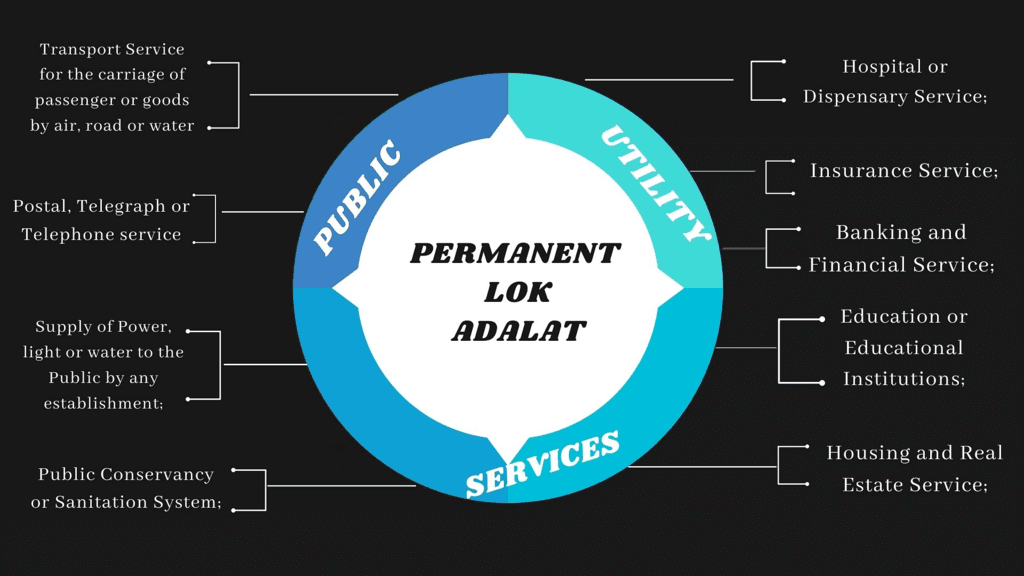 Permanent Lok Adalat
Permanent Lok Adalat
Composition: Permanent Lok Adalats have a Chairman who is or has been a district judge or held a higher judicial office. There are also two other members with experience in public utility services.
Jurisdiction: They handle cases related to public utility services like transportation, postal services, power supply, sanitation, hospitals, and insurance.
Monetary Limit: They can deal with cases involving up to Rs. 10 lakhs. However, the Central Government can change this limit, and in 2015, it was increased to Rs. One Crore.
No Criminal Offenses: Permanent Lok Adalats don't deal with matters related to offenses that cannot be settled under any law.
Application Process: Before going to court, a party in a dispute can apply to Permanent Lok Adalat for a resolution. Once the application is made, no one involved can take the matter to any other court.
Settlement Attempt: If Permanent Lok Adalat thinks there's a chance for a settlement, it proposes terms to the parties. If they agree, the Adalat makes an award based on those terms. If not, it decides the dispute on its own.
Final and Binding: Every decision made by Permanent Lok Adalat is conclusive and must be followed by all parties. The decision is reached by a majority vote among the members.
Family Courts
The Family Courts Act of 1984 was created to set up Family Courts. These special courts aim to encourage understanding and quickly resolve issues related to marriage and family matters.
Reasons
The Family Courts Bill was introduced in Parliament by the Government of India, and the reasons for creating separate Family Courts:

- Public Request: Many women's groups, organizations, and individuals suggested having Family Courts. These courts would focus on settling family disputes, giving more importance to finding solutions through understanding rather than strictly following complex legal procedures.
- Law Commission Recommendation: The Law Commission, in its 59th report in 1974, emphasized that when dealing with family disputes, the courts should take a different approach than in regular civil cases. The idea was to make efforts for settlement before a trial begins. The Civil Procedure Code was amended in 1976 to address family matters differently.
- Challenges with Current Approach: Despite these recommendations, regular courts were not consistently adopting conciliatory procedures for family disputes. They continued to handle family matters similar to other civil cases, using an adversarial approach. To address this, and in the interest of the public, there was a need to establish Family Courts for a faster resolution of family disputes.
- Therefore, the main goals for creating Family Courts were:
- Specialized Court: Establish a court solely dedicated to family matters. This ensures the court has the expertise needed to handle these cases quickly.
- Conciliation Mechanism: Create a system for settling family disputes through conciliation.
- Inexpensive Resolution: Provide a more affordable way to resolve family issues.
- Flexible and Informal Proceedings: Foster an informal and flexible atmosphere in the court proceedings, making it easier for families involved.
Features
The Family Courts Act of 1984 is a law that focuses on resolving family disputes more efficient and accessible. Here are some straightforward explanations of its key features:
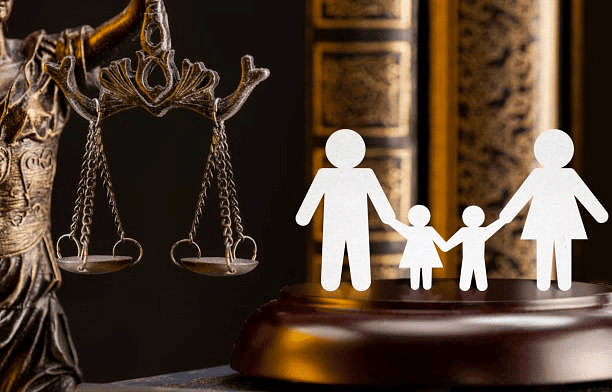
- Setting up Family Courts: This law allows each state, with guidance from the High Courts, to create Family Courts.
- Mandatory in Larger Cities: In cities or towns with over a million people, it's a must for the state government to establish a Family Court.
- Flexible Establishment in Other Areas: If needed, states can choose to set up Family Courts in other regions as well.
- Exclusive Jurisdiction: Family Courts deal specifically with matters like divorce, property issues between spouses, legitimacy declarations, guardianship, and family maintenance.
- Reconciliation Focus: Family Courts aim to reconcile or settle disputes first. During this phase, the process is less formal, and strict rules don't apply.
- Involvement of Social Agencies: Social workers, counselors, and medical experts can be brought in during the reconciliation stage to help in resolving issues.
- Representation in Court: People involved in a dispute in Family Court may not automatically have a lawyer. The court may involve a legal expert if necessary for justice.
- Simplified Rules: The Act simplifies the rules of how evidence is presented and procedures are followed, making it easier for Family Courts to handle disputes effectively.
- Single Right of Appeal: If parties are not satisfied with the Family Court's decision, they can appeal, but there's only one level of appeal, and it goes to the High Court.
Gram Nyayalayas
The Gram Nyayalayas Act of 2008 was created to set up Gram Nyayalayas at the grassroots level. The goal is to make justice more accessible to citizens right in their communities. This ensures that all citizens, regardless of social, economic, or other challenges, have equal opportunities to seek justice.
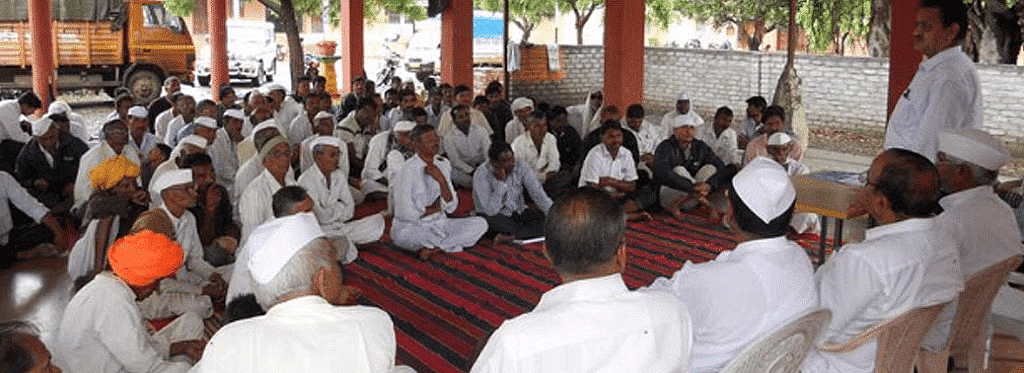 Gram Nyayalayas
Gram Nyayalayas
Reasons
The Gram Nyayalayas Act of 2008 was introduced to address challenges in providing justice to the poor and disadvantaged. Here are the reasons the government gave for establishing Gram Nyayalayas:
- Constitutional Directive for Equality: Article 39A of the Constitution emphasizes that the legal system should promote justice with equal opportunities. It directs the state to provide free legal aid, ensuring justice is accessible to all citizens, regardless of economic or other challenges.
- Strengthening Judicial System: Various measures have been taken by the government to strengthen the judicial system, including simplifying procedural laws and introducing alternative dispute resolution methods like arbitration, conciliation, and mediation. However, there is a need for further enhancement.
- Law Commission Recommendations: The Law Commission of India, in its 114th Report on Gram Nyayalayas, proposed the establishment of such courts to ensure speedy, affordable, and substantial justice for the common man. The Gram Nyayalayas Act, 2008 is largely based on these recommendations.
- Bringing Justice to Rural Areas: Establishing Gram Nyayalayas in rural areas is a step towards making justice accessible to people in these regions. It aims to fulfill the dream of providing speedy, affordable, and substantial justice to the rural population.
Features
Here are the key features of the Gram Nyayalayas Act explained in simpler language:
- Type of Court: The Gram Nyayalaya is a court with a presiding officer called Nyayadhikari, appointed by the State Government in consultation with the High Court. The Nyayadhikari is a judicial officer.
- Establishment: Gram Nyayalayas are set up for every intermediate-level Panchayat or a group of contiguous Panchayats in a district. If there's no Panchayat at the intermediate level, they are established for a group of contiguous Panchayats.
- Judicial Officers: The Nyayadhikaris presiding over Gram Nyayalayas are judicial officers with similar powers and salary as First Class Magistrates under High Courts.
- Mobile Court: Gram Nyayalayas function as mobile courts, dealing with both criminal and civil cases. The court's seat is at the intermediate Panchayat headquarters, but it travels to villages to hear and resolve cases.
- Types of Cases: Gram Nyayalayas handle criminal cases, civil suits, claims, or disputes specified in the First and Second Schedules of the Act.
- Procedure: The court follows a summary procedure in criminal trials and a specific procedure in civil cases.
- Conciliation: Gram Nyayalayas aim to settle disputes through conciliation, utilizing appointed conciliators for this purpose.
- Judgments and Orders: Decisions by Gram Nyayalayas are considered decrees, and a streamlined procedure is followed for their execution.
- Evidence Rules: Gram Nyayalayas are not strictly bound by the rules of evidence in the Indian Evidence Act but are guided by natural justice principles and rules set by the High Court.
- Appeals: Appeals in criminal cases go to the Court of Session and are to be heard within six months. Appeals in civil cases go to the District Court, with a similar six-month disposal timeframe.
- Plea Bargaining: A person accused of an offense can apply for plea bargaining.
Establishment
According to the Gram Nyayalayas Act, 2008, it's up to the State Governments, along with the High Courts, to decide whether to set up Gram Nyayalayas. However, the law doesn't force them to do it.
Most states have established regular courts at the Thluka level. But there are challenges like police and other officials being hesitant to involve Gram Nyayalayas, lack of interest from the legal community, and issues with notaries and stamp vendors. Also, there's a problem with regular courts having overlapping jurisdiction.
These challenges were discussed in a meeting of top judges and state leaders in 2013. They decided that each state should decide whether to establish Gram Nyayalayas based on local issues, with a focus on places where regular courts are not available.
Commercial Courts
The Commercial Courts Act, 2015, was created to set up special courts (Commercial Courts) in High Courts to handle commercial disputes of a certain value. These disputes include issues arising from typical transactions among merchants, bankers, financiers, and traders, covering areas like mercantile documents, joint ventures, partnership agreements, intellectual property rights, insurance, and more.
Reasons
When introducing the Commercial Courts Bill, 2015, in Parliament, the Government cited several reasons for its establishment:
- People have known for some time that we need a way to quickly solve big-money business problems. These problems have lots of details and legal stuff, so we need a special system to solve them fast. This helps make India's legal system look good to people worldwide, especially those who might invest money.
The Law Commission of India, in its 253rd Report, recommended creating Commercial Courts, Commercial Division, and Commercial Appellate Divisions in High Courts to handle specific-value commercial disputes.
After getting the suggestions, the government brought the idea into Parliament. They suggested that if there are any cases, appeals, or requests connected to big-money business disagreements, they should be looked into by special Commercial Courts or a section of the High Courts just for commercial matters. Following these recommendations, the Bill was introduced in Parliament.
- The planned law wants to help India's economy grow, make the world see our justice system in a good way, and make global investors feel sure about our legal ways.
Features
Here are some of the key points about Commercial Courts:
- Creation of Commercial Courts: The state government can establish Commercial Courts at the district level, or for High Courts with original jurisdiction, they can be set up at the district judge level.
- Commercial Appellate Courts: The state government can designate Commercial Appellate Courts at the district judge level to handle appeals from commercial courts below that level, excluding areas under High Courts' original civil jurisdiction.
- Commercial Division in High Courts: In High Courts with original civil jurisdiction, the Chief Justice can form a Commercial Division to handle commercial disputes of a specified value filed in the High Court.
- Commercial Appellate Division: The Chief Justice of the concerned High Court can constitute a Commercial Appellate Division to hear appeals against orders from Commercial Courts at the district judge level and orders from the Commercial Division of that High Court.
- Specified Value of Disputes: The specified value of commercial disputes must be at least 3 lakh rupees, as notified by the Central Government. In 2018, this value was reduced from 1 crore rupees to 3 lakh rupees.
- Compulsory Mediation: Before filing a suit without urgent interim relief, there is a provision for compulsory mediation. The Pre-Institution Mediation and Settlement Mechanism are introduced for this purpose. Additionally, the Central Government may empower authorities under the Legal Services Authorities Act, 1987, for pre-institution mediation.
|
154 videos|994 docs|260 tests
|
FAQs on Laxmikant Summary: Lok Adalats and Other Courts - Indian Polity for UPSC CSE
| 1. What is the National Legal Services Authority? |  |
| 2. What are Lok Adalats and how do they function? |  |
| 3. What are Permanent Lok Adalats and how are they different from regular Lok Adalats? |  |
| 4. What is the role of Family Courts in India? |  |
| 5. What are Gram Nyayalayas and what is their purpose? |  |

